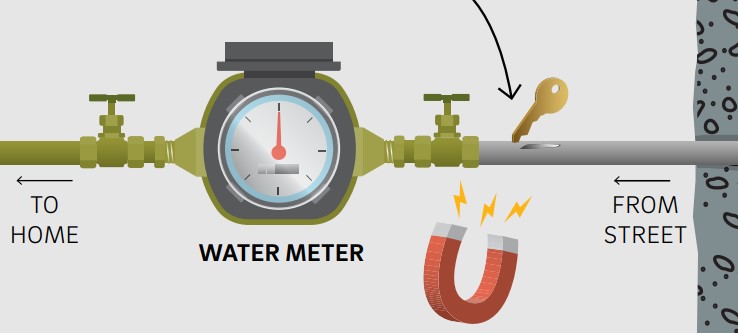Philadelphia has never had water mains made of lead, but the service line bringing water from the main to your property may contain lead.
You can check the portion of your service line that enters your property at your water meter. Buried sections of service lines may contain different materials, if one portion was replaced.
Find your property on the Service Line Map to view our records for your service line.
How to check your service line material

1. Find where your service line enters the building
Start by finding your water meter. In Philadelphia, it’s usually in the basement, by the wall closest to the street.
Look at the pipe that comes through the outside wall of your home and connects to your meter.
2. Carefully scratch the pipe with a key or a coin
Scratch the surface lightly with a key or coin, like you would a scratch-off lottery ticket. Do not use a knife or other sharp tool. Be careful not to make a hole in the pipe.
NOTE: If pipe is painted, you can use sandpaper to expose the metal first.
- If the scratch turns a silver color, it could be lead or galvanized steel.
- If the scratch is a shiny orange/copper, like a shiny penny, it’s probably copper.
- If the scratch shows white, blue, or another color and isn’t metal, it’s likely plastic.
Lead is very soft and dull, but will turn shiny silver when scratched.

Magnets will only stick to steel, not lead or copper.
3. See if a magnet sticks
If the scratch is silver, hold a refrigerator magnet up to the pipe and see if it sticks.
If the magnet sticks to the pipe, it’s galvanized steel. Magnets will not stick to lead, copper, or plastic.